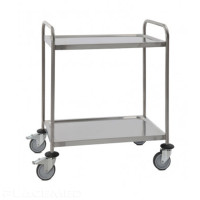Medical Tourniquet: Innovation, History, and Optimal Choice
Discover the world of the medical tourniquet with our new article dedicated to this device that is essential in medicine. In this article, we will cover the fascinating history of this vital tool, explore the different types currently available on the medical device market, and try to give you some advice on choosing the model that will best meet your clinical needs.

Medical tourniquets represent an essential innovation in the field of emergency medicine. Although often unknown to the general public, these medical devices play a predominant role in controlling hemorrhages and preserving life. From ancient Egypt to modern medicine, the history of the tourniquet is a truly fascinating chronicle of development and adaptation. In this article, we will explore in depth the world of medical tourniquets: from their vital utility to their evolution over time, including the different types available on the market. We will also address the essential criteria to consider when choosing a medical tourniquet, ensuring efficient and safe use of this indispensable tool.
What is a MEDICAL TOURNIQUET?
A medical tourniquet is an essential device in medicine, used to control bleeding by compressing blood vessels in an injured limb. This vital tool can save lives in a medical emergency by limiting blood loss until surgical intervention can be performed. Tourniquets are usually made of durable and flexible materials like latex, rubber, or synthetic materials, and feature an adjustable clamping mechanism to control pressure. They are used by health professionals, including doctors, nurses, first responders, and emergency medical services. It is crucial to note that the use of a tourniquet must be properly trained and supervised, as inappropriate use can lead to serious complications. Thus, a medical tourniquet is an indispensable piece of emergency care equipment, capable of making the difference between life and death.
What is the history of the MEDICAL TOURNIQUET?
The history of the medical tourniquet in medicine is long and fascinating, dating back thousands of years. The first documented use of a tourniquet was in ancient Egypt, and since then, this medical tool has evolved and improved to become a vital component of emergency medical care today.
Over the centuries, tourniquets have been used to control bleeding during surgical procedures and emergencies. However, their use has been refined over time, thanks to technological advancements and a better understanding of human anatomy.
In modern medicine, the importance of the medical tourniquet cannot be underestimated. It is often used in severe trauma situations to limit blood loss and increase a patient's chances of survival until appropriate medical treatment can be applied. It is also used in surgery, particularly during amputations, to prevent excessive bleeding.
However, it should be emphasized that the use of the tourniquet must be correctly mastered by health professionals. Improper use can lead to complications, including nerve damage and tissue damage. Therefore, adequate training in the use of this device is crucial.
What are the different types of tourniquets?
There are several types of medical tourniquets, each with specific characteristics and appropriate uses depending on the medical context. Understanding these differences is crucial to ensure efficient and safe use in medical care.
Elastic tourniquet
This type of tourniquet is usually made of latex or rubber and is commonly used for blood draws or the placement of intravenous catheters. Its elasticity allows for adjustable and controlled compression.
Pneumatic tourniquet
Frequently used during surgical procedures, this type of tourniquet is inflated to apply pressure on the limb and stop blood flow. Its use allows for precise limitation of bleeding in the operative field.
Tourniquet tourniquet
Primarily used in emergency situations to control severe limb hemorrhages, it is a mechanical device that can be tightened to completely block blood circulation until appropriate medical care is available.
Clamp tourniquet
Used in certain surgical procedures, this type of tourniquet allows for specific isolation of a part of the vascular system to control bleeding.
Ischemic tourniquet
A type of tourniquet used in muscle rehabilitation that restricts blood flow to a specific muscle to increase the effectiveness of physical exercise.
How to properly choose your MEDICAL TOURNIQUET?
Choosing the right medical tourniquet is a crucial step to ensure an effective and secure medical intervention. Here are some key factors to consider when selecting a medical tourniquet:
- Type of Tourniquet: the different types of tourniquets (elastic, pneumatic, tourniquet, clamp, ischemic) have specific uses. Choose the one that best meets your clinical needs.
- Quality of Material: the tourniquet must be made of durable and resistant material to withstand the necessary tension. Materials such as latex, rubber, or synthetic materials are commonly used.
- Ease of Use: a good medical tourniquet must be easy to use, even in stressful or emergency situations. Ensure it can be easily tightened and loosened.
- Size: the size of the tourniquet must be suitable for the patient. There are tourniquets of different sizes for adults, children, and infants.
- Reusability: some tourniquets are designed to be reusable, while others are for single use. Depending on your needs, this characteristic may influence your choice.
- Certifications: Ensure the tourniquet is certified by competent authorities, which guarantees that it has been tested for safety and efficacy.
 Francais
Francais 
 Quote
Quote  Cart
Cart 



